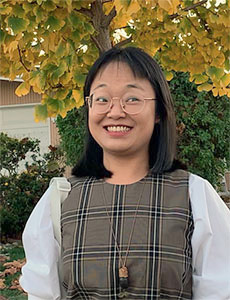The evolution of inter-basin δ15N gradients since the Miocene: Insights from a new simple realistic global N cycle model
Nitrogen (N), a critical nutrient in the ocean, influences biological productivity, carbon sequestration, and climate change; yet there is limited knowledge of long-term oceanic N cycling and budget on million-year timescales due to the lack of N isotope (δ15N) records and of model framework to simulate the data. In this study, I propose to build a biogeochemical box model of global oceanic N cycle to simulate basin-resolved δ15N and constrain the rates of N cycle processes over geological time. Newly published δ15N records show dramatic change in δ15N gradient between Pacific and Atlantic since the Miocene and I propose to apply this model to investigate the mechanisms driving the striking inter-basin δ15N gradient evolution over the last 25 Myr. This model will offer inferences about the operation of the ocean N cycle for future studies and the Miocene simulations will offer new insight into long-term N dynamics and budget during the past warm periods.
Biography
I was born in the vibrant province of Sichuan, China and spent my childhood in Chongqing, a city renowned for its mountainous terrain and delicious hot pot. As an undergraduate, my interests in paleoceanography stemmed from a fascinating course taught by professor Zhimin Jian and I earned a B.S. in marine geology at Tongji University in Shanghai. I was further drawn into the field of paleoceanography and paleoclimate through my senior thesis project. During this project, I reconstructed the dust flux at ODP Site 1208 in the North Pacific during the late Pleistocene, advised by Dr. David McGee at the Massachusetts Institute of Technology. Currently, I am pursuing a Ph.D. at the University of California, Santa Cruz, working with Dr. Christina Ravelo. My research focus is on exploring the long-term marine nitrogen cycling on million-year timescales and understanding how nitrogen dynamics interact with climate changes by using nitrogen isotopes combined with modeling simulations. For my Schlanger project, I am working with Dr. Mathis Hain to build an isotope-enabled biogeochemical box model of global nitrogen cycling. Our goal is to investigate the mechanisms driving the inter-basin nitrogen isotope gradient evolution since the Miocene.







